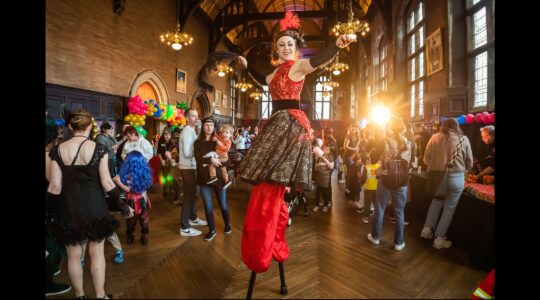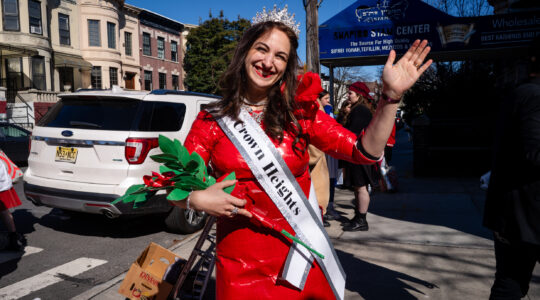When Larry Rivers received the National Foundation for Jewish Culture’s Achievement Award in 1991, the painter and jazz musician demonstrated his notorious bad-boy persona.
"He basically got up there and with this puzzled and ingenuous manner, spread his hands out and said: What am I doing here? Who are you guys?" one member of the amused audience said recently of Rivers, who died last week at the age of 78.
Despite his feigned bewilderment a decade ago, Rivers is remembered today as one of the first major contemporary artists to deal literally with Jewish, and often autobiographical, subjects and imagery. Born Yizroel Loiza Grossberg, in the Bronx, Rivers nevertheless seemed to inhabit his Jewishness as comfortably as he did counter-cultural lifestyles.
"He was a ‘hamische’ bohemian," says Robin Cembalest, executive editor of ARTnews magazine, who interviewed Rivers in his downtown studio in the late 1990s. At the time, Rivers had completed a self-portrait, which was based on a work by Felix Nussbaum, who died in Auschwitz.
"There are not a lot of artists who use specifically identifiable Jewish subject matter," Cembalest says. "And then to go so far as to paint your own face in this famous, haunting self-portrait: that’s a strong identification."
Rivers had previously visited Holocaust themes, notably in portraits of the writer and survivor Primo Levi (on view through Aug. 25 in a retrospective at the Corcoran Gallery of Art in Washington). But Rivers is better known for his playful sense of humor and his zestful approach to life and art.
Widely regarded as a forefather of Pop art, Rivers was sometimes scorned by critics but eventually recognized as a pioneer, turning out figurative works in the face of the prevailing trend toward abstraction in the 1950s.
In 1984, The Jewish Museum exhibited Rivers’ monumental triptych "The History of Matzoh: The History of the Jews." New York art collectors Sivia and Jeffrey Loria had commissioned the work as one mural telling the story of the Jewish people.
In the end, Rivers found that "one painting wouldn’t do it," says Barbara Gilbert, fine arts curator at the Skirball Cultural Center in Los Angeles, where the 10-by-42-foot mural was exhibited in 1999 and hailed as "a landmark in Jewish art expression."
Meticulously researched, "The History of Matzoh" ranges from antiquity to just before World War II, with clear references to biblical art, Old Masters, and Rivers’ experience as the Bronx-born son of immigrant parents. There are also personal jokes and asides, Loria says. For example, Rivers circumcised Michelangelo’s David, explaining, "Of course David was circumcised."
Rivers reportedly felt his career "took a hit" for depicting history and personal biography in the work. But upon finishing the mural, he told a reporter, "I saw more relationship between the world and Judaism."
The New York Jewish Week brings you the stories behind the headlines, keeping you connected to Jewish life in New York. Help sustain the reporting you trust by donating today.




